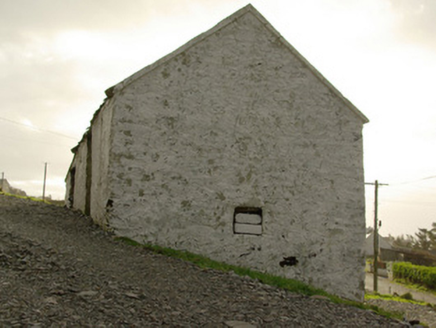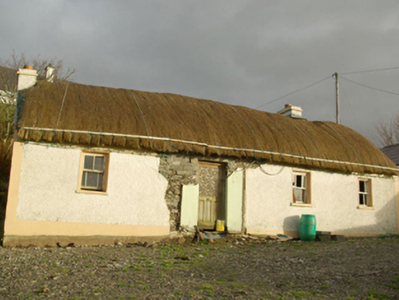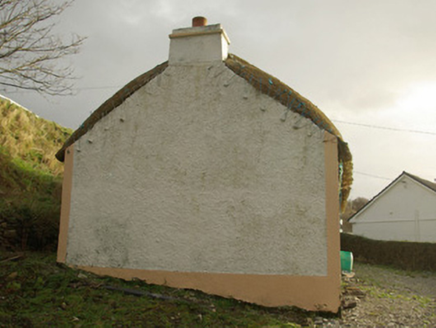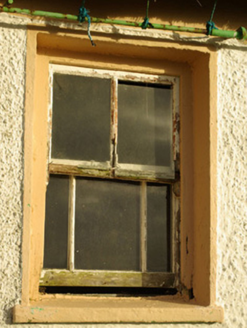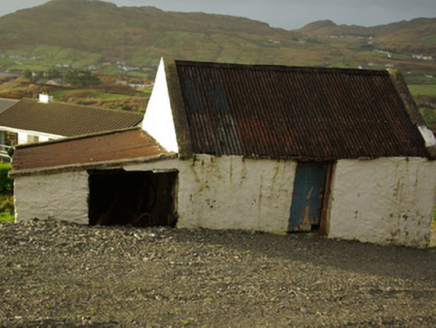Survey Data
Reg No
40909612
Rating
Regional
Categories of Special Interest
Architectural, Technical
Original Use
House
In Use As
House
Date
1810 - 1850
Coordinates
159742, 376433
Date Recorded
04/12/2007
Date Updated
--/--/--
Description
Detached four-bay single-storey vernacular house, built c. 1830. Pitched/domed thatched roof (recently re-thatched) having ropes over secured on metal rail to front elevation (south-west) and with stone pegs to side elevations. Two roughcast rendered chimneystacks, one to the north-west gable end and one offset to the south-east side of centre. Roughcast rendered walls over rubble stone construction with smooth rendered plinth to the base, smooth rendered eaves course, and with smooth rendered strips to the corners of the main elevation (south-west); modern blockwork repairs in places. Square-headed window openings with smooth rendered reveals, and two-over-three-pane timber sliding sash windows. Square-headed doorway, offset to the north-east side of centre, having remains of rendered reveal, and with timber door having glazed panels to upper half. Porch to front door recently removed. Set back from road in elevated sloping site to the west of Cill Charta/Kilcar, overlooking Teelin Bay to the south-west and west. Approach avenue to house from the main road to the south-west. Detached single-bay single-storey outbuilding to the south having pitched corrugated-metal roof with raised cement verges to gable ends, limewashed rubble stone walls, and square-headed doorway having timber sheeted door; single-storey shed addition to the north-east elevation having mono-pitched corrugated-metal roof, rubble stone walls and square-headed doorway.
Appraisal
This vernacular house retains much of its early character despite some recent alterations. Modest in scale, it exhibits the simple and functional form of vernacular building in Ireland. Of particular interest in the survival of the thatched roof, which is now sadly becoming increasingly rare in Donegal. The rounded or shallow pitched roof is a typical feature of thatched houses located close to the sea in exposed areas in the north-west of Ireland, while the pegs/and metal rail to the eaves are used to tie ropes (and sometimes nets) over the roof to secure it against the prevailing winds, as is the case here at Derrylaghan. The retention of distinctive two-over-three pane timber sliding sash windows adds further interest and adds to the visual appeal of this building. The form of this building having chimneystacks to the north-west gable end suggests that this building is of the ‘direct entry’ type that is characteristic of the vernacular tradition in north-west Ireland. The location of the chimneystacks and the main doorway also suggests that this building was extended to the south-east by a bay at some stage. This house represents a typical surviving example of a once ubiquitous building type in the rural Irish countryside, and is a valuable addition to the vernacular heritage of County Donegal. The simple outbuilding adds to the setting and completes the context.
